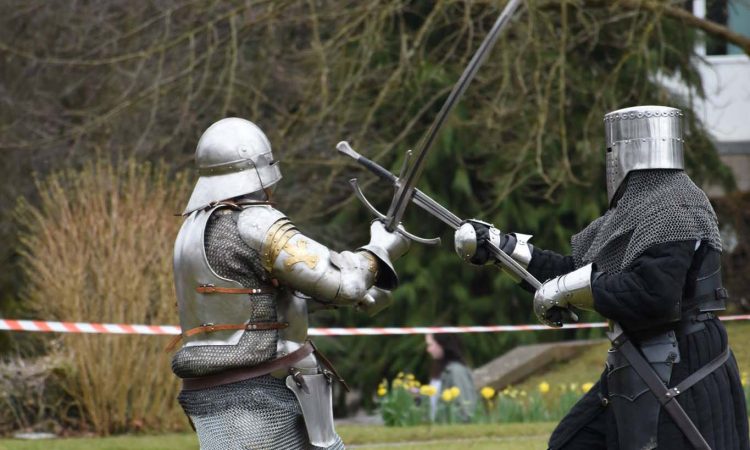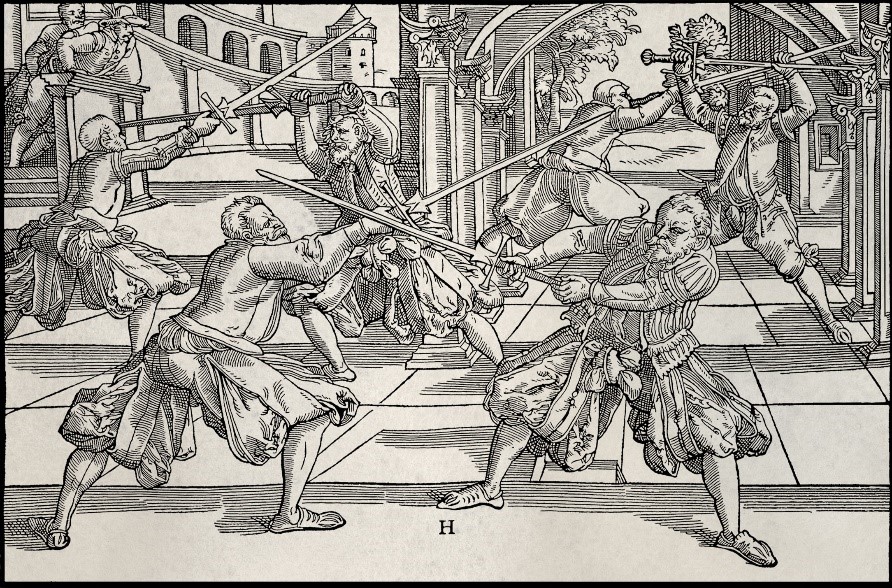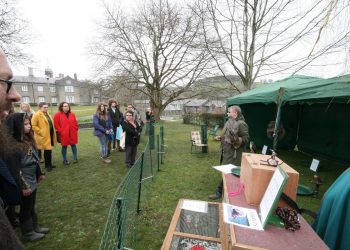
In the first of our clubs and societies features we asked 3rd year BA Conflict and War student, Rory Butcher to tell us more about the Lampeter Campus Battle Society…
The Lampeter based Battle Society originated in the 1990s, (as far as I am aware) although recently we’ve taken a different approach to the martial art of medieval combat than our predecessors. There are several re-enactment societies across the three main campuses of UWTSD, and why shouldn’t there be as there is a thriving passion for history here which many of us enjoy.
Battle Soc differs from some other societies in that we don’ts eek to be historical in our kit. Instead, we are part of a larger community of practitioners of Historical European Martial Arts (HEMA). This international collective of martial artists, historians, reenactors, and many more besides, all aim to engage with the fighting manuals of yesteryear – ranging from the 14th century all the way up to the advent of modern sport fencing in the early 1900s. We do this by studying these manuals, or treatises, in intense detail to determine what the fencing master was referring to.
Battle Soc specifically studies the writings of the 16th century German fencer Joachim Meyer who, in 1570, published his volume Thorough Descriptions of the Art of Fencing. In this he covers his approach to fighting with the longsword, dussack (a short single-handed sword), rapier, dagger, and polearms – a lot to cover in a curriculum for those meeting twice a week! We focus on his lessons for the longsword. This is for the main reasons of simplicity and pragmatism: the longsword is one of the most universal weapons in HEMA to learn since, as we have discovered, once we have understood a master’s approach with the longsword, we are able to understand his approach to sword and buckler (a small shield), dussack, and even basic polearm technique. Therefore by practicing our skills of longsword, Battle Soc members are able to pursue their individual interests as well.
But, it’s not as simple as simply practising our techniques set out by an instruction manual. The major pitfalls encountered by every HEMA practitioner are the problems both in translation and in interpretation. Meyer was writing in German, and Renaissance German at that – think about how different Shakespearean English is to modern English. This leads to the bizarre situation where a guard position which involves holding the sword above one’s head is literally rendered as the guard of ‘the day’ by several English language editions. The second issue is to do with how he worded his manual. Whilst it may have made sense to Meyer, some sections are vaguer than most scholars would otherwise appreciate. We therefore spend more time than we would like just trying to make his descriptions work in real life, not just on the page!
Here’s a passage from his longsword manual with the accompanying illustration. Can you work out what he meant?
‘If your opponent strikes from above, then strike against his sword with crossed hands from the left and below, so that your pommel sits under your right arm, and thus quick to glide, step strongly from him from your left side with your left foot, swing your sword’s pommel out farther in an arc toward your left side so that the swing moves your long edge over his right arm behind his pommel or hits atop his right arm, as is shown by the figure in the right side foreground of illustration H, and closely thereafter your sword flies out from close to your side, and again strikes against the hands through the cross, so it is done.’

Suffice to say, we have our work cut out! Nevertheless, when a passage is successfully translated into a physical idea it is most rewarding – and even more so when we can carry it out during our sparring. The ability to fight with long-swords in a coherent manner, and in a way which is, on the whole, better for us than our opponents! For ultimately, this is what we train for. So if you fancy learning to sword-fight from a manual written over four hundred years ago, find us on Facebook at The Battle Society TSD Lampeter.






